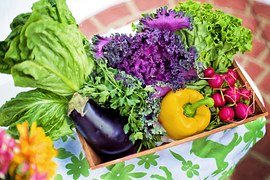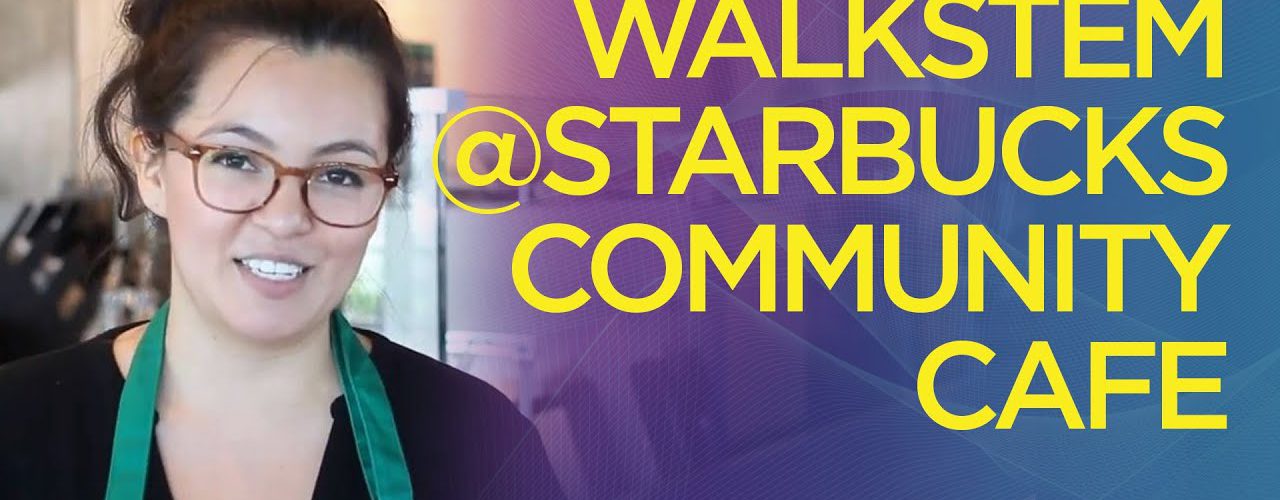

In this blog post, we introduce our Watch This, Do That series where you can watch a short video from our YouTube channel and do a task (experiments in this case) that is inspired by the video. All the tasks require no specialized materials. Frequently, when we think of easy, fun STEM activities and science experiments for children, we see endless results for DIY science experiments and crafts. But what about some time in the kitchen making drinks and cooking food, inspired by Starbucks or your favorite diner or cafe? talkSTEM created a walkSTEM tour at a Starbucks Community Café that dives into some interesting topics and questions. We hope that families and teachers looking to add unique science experiments to their at-home curriculum will try out the explorations suggested here.
We encourage you to watch the five 2-minute videos included in this post and complete the suggested easy experiment described for each video. It’s simple: watch this, do that. These are flexible science experiments you can do with household supplies whenever you need it.
- Customized drinks: Watch this video about how Starbucks uses a handful of syrups in different combinations to come up with customized and varied drinks. Can you make a different smoothie or milk shake or even a flavored iced tea at home. Try planning a menu where you make a different one each day this week! Let us know your favorites on social media!
2. Hot or Cold Brew? Watch this video about a common science question asked in a coffee shop: what is the difference is between a hot and cold brew coffee? You can test your favorite tea bag (black or herbal) or even get a few different teas and design an experiment to address this question: what’s the difference in flavor between a cold brewed tea versus a tea brewed in hot water. Which do you like better? NOTE: you will need the cold brew tea in the cold water overnight (about 12 hours).
You can create mini taste test experiments at home to observe the difference between the procedures. Using small cups, you can taste test each and mark on a scale how bitter, sweet, dilute or strong each sample is. When you record what taste, this is an example of qualitative data.
We know that coffee is created when water extracts compounds from coffee grounds. When hot water is used, lots of compounds are extracted to create a strong-tasting coffee. These compounds react and generate acid in the drink. When cold water is used, less compounds are extracted, so there is less acid in the coffee. Is the same true for black tea? herbal tea?
3. More or Less Bubbles in Your Soda: Watch this video to think about where bubbles in drinks tend to come from. If you have an adult who enjoys nitro brew coffee, you can observe their drink the next time they pick one up at their favorite coffee shop and compare it with your soda. But even without a nitro brew, you can conduct a scientific investigation on your soda. Pour some (the same amount) into a few cups sequentially (out of the same can or bottle). Does it bubble the same amount? You probably noticed a difference. Why do you think that is? Next, you can explore the difference between water and carbonated water in the ability to lift objects like raisins, pasta, and others. Here is a fun science experiment you can do.
4. Efficient Routines: Watch another science experiment video on how commercial kitchens use efficient processes to make sure they make high-quality food and drink consistently for their customers. Come up with some efficient routines in your kitchen that would allow you to do the same for everyone in your family. Now, consider other efficient routines you use in your life – from getting dressed in the morning to packing your bag. How can you make your routines more efficient?
5. Sous Vide Cooking: Watch this video on sous vide eggs offered at Starbucks. Why cook sous vide? The video addresses this question and more information is here. What’s the best temperature for sous vide cooking? Read this article about why this question is a tough one. Now, if you have a bag to cook some eggs or other food in, design your own experiment on sous vide cooking in your kitchen. What questions do you have? Maybe you want to find out the best duration for cooking eggs sous vide? Or for cooking potatoes or broccoli sous vide? Maybe you’d like to compare the taste and consistency of two methods such as baking versus sous vide? Let us know what you do on social media!
You can watch the entire walkSTEM@Starbucks Community Cafe here:
We hope this inspires you to explore our vast collection of walkSTEM experiences at other locations, and to take a second look at the spaces you visit everyday. What science do you notice around you? Take a photo or video of some science that caught your eye and share with us! @talkstem @talkingstem
You can explore more walkSTEM experiences at our walkSTEM Academy on YouTube.








Add comment